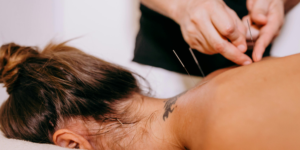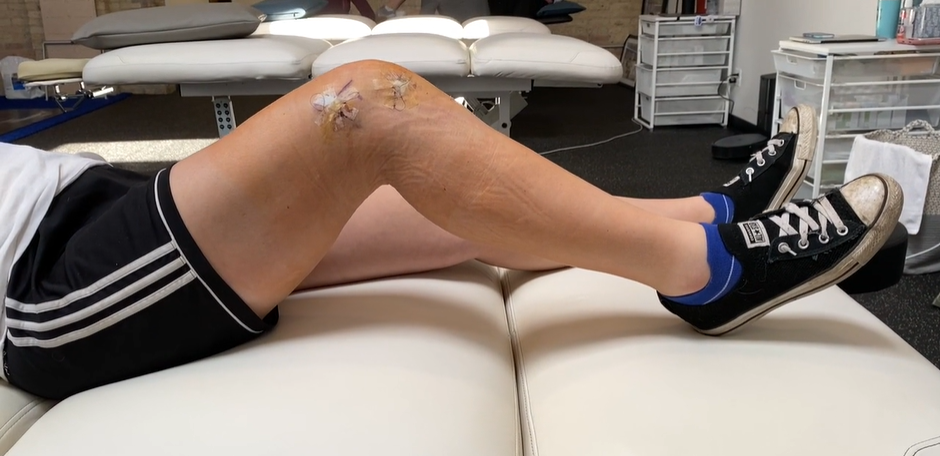If you’re recovering from an injury or dealing with chronic pain, stepping back into movement can feel overwhelming.
Previously, we explored the science of pain—why it happens and how it affects the body. Now, let’s focus on the next step: How do we recover efficiently and prevent future injuries?
If you’ve been sidelined by pain, it’s time to take control of your healing process. This guide breaks down proven recovery strategies, including manual therapy, exercise, and psychological tools to help you regain strength and confidence.

Step 1: Set Your Recovery Goals
Healing starts with a clear therapeutic objective—a roadmap to get you from pain to peak performance. Whether your goal is to reduce swelling, rebuild strength, or return to sports, setting a defined target helps guide your recovery process.

Step 2: The Best Tools for Healing
Once a recovery goal is set, the next step is choosing the right treatments and strategies to speed up healing. Here are some of the most effective recovery methods:
1. Manual Therapy & Hands-On Techniques
-
Dry Needling – Targets pain, improves muscle activation, and restores movement.
-
Fascial Manipulation – Releases tight connective tissue for better mobility.
-
Joint Mobilization & Soft Tissue Work – Loosens stiff muscles and improves flexibility.
-
Taping & Electrical Stimulation – Supports injured areas and enhances circulation.
Why it works: These therapies improve blood flow, break down scar tissue, and help you move pain-free.
2. Medications & Pain Management
While medication can provide short-term relief, it should be used carefully. Safe options include:
✅ NSAIDs (Non-Steroidal Anti-Inflammatory Drugs) – Reduce swelling and pain.
✅ Nerve Pain Medications – Help manage nerve-related discomfort.
✅ Antidepressants for Pain Modulation – Used in cases of chronic pain.
Warning: Opioids, while effective, are highly addictive and should only be considered if other options fail.
3. Movement & Exercise Therapy
-
Strength Training & Mobility Work – Restores muscle function and prevents re-injury.
-
Neuromuscular Re-Education – Retrains the body for proper movement patterns.
-
Progressive Loading – Slowly reintroducing movement to build strength without overloading injured tissue.
Why it works: Movement is medicine! The right exercises reduce stiffness, improve circulation, and rebuild muscle strength after an injury.

Step 3: Addressing the Mental Side of Pain
Did you know that pain isn’t just physical? It’s deeply connected to your emotions, thoughts, and past experiences. In fact, the American Psychological Association states that “People often think of pain as a purely physical sensation.However, pain has biological, psychological and emotional factors… Chronic pain can cause feelings such as anger, hopelessness, sadness and anxiety. To treat pain effectively, you must address the physical, emotional and psychological aspects… Understanding and managing the thoughts, emotions and behaviors that accompany the discomfort can help you cope more effectively with your pain—and can actually reduce the intensity of your pain.”
How to Mentally Overcome Pain & Fear of Re-Injury
-
Cognitive Behavioral Therapy (CBT) – Helps reframe negative thoughts about pain.
-
Mindfulness & Stress Reduction – Lowers pain perception and improves resilience.
-
Biofeedback & Visualization – Helps retrain the brain’s response to pain.
Why it works: When you feel in control of your pain, your body responds better to treatment.
Supporting a Young Athlete Through ACL Recovery?
The mental side of healing is just as important as the physical. Learn how to help your child navigate the emotional challenges of ACL rehab in our latest blog: Dear Parents: The Mental Challenges of ACL Recovery for Young Athletes
The Art of Recovery: A Collaborative, Patient-Centered Approach
Every patient is unique, and recovery is never one-size-fits-all. As healthcare providers, our role is to piece together the puzzle—pairing clinical expertise, evidence-based interventions, and compassionate communication to guide individuals toward their goals.
Whether using dry needling, manual therapy, exercise, mindfulness, or education, what matters most is the intention behind each intervention. Healing is not just about eliminating pain—it’s about restoring function, confidence, and quality of life.
Moving Forward
Recovery is a journey, and every tool we use should align with the patient’s needs and goals. As we continue exploring ways to bridge the gap from pain to performance, we invite you to reflect on the tools you rely on most.
What strategies have been most effective in your practice or personal recovery?
Let’s continue the conversation—share your thoughts and experiences with us on social media!

Download our free guide, Quick Reference Guide: 10 Proven Strategies to Help Your Child Through a Season-Ending Injury, and gain actionable tips to help them navigate the recovery process.
Click below to download the guide.
At PREP Performance Center, we specialize in personalized injury recovery plans designed to help young athletes return to peak performance.
Schedule an appointment today for expert guidance tailored to your child’s recovery needs.
Book now and take the first step toward their recovery.

